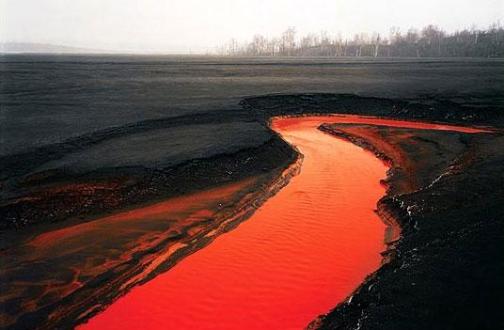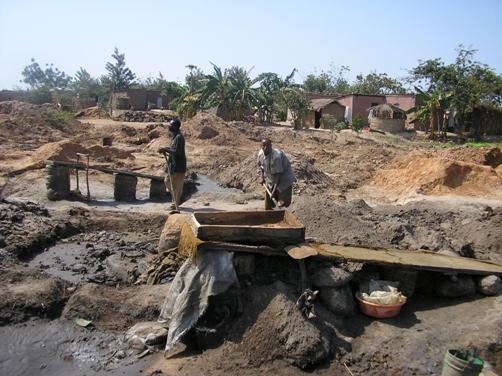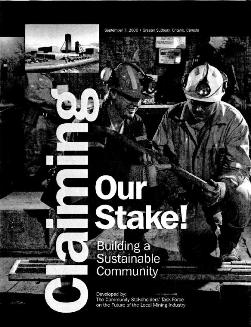 This article was originally published in the Sudbury Star – Friday, February 6 , 2004
This article was originally published in the Sudbury Star – Friday, February 6 , 2004
Sudbury should work extra hard to control its image
Ed Burtynsky is a very successful art photographer who, unfortunately for Sudbury, has become somewhat of a celebrity within the tiny Toronto media establishment. Why should the city be concerned? Mr. Burtynsky’s principal subject matter happens to be industrial environments and many of his photos were taken in the Sudbury region. In fact one particularly photo titled, Nickel Tailings #34, Sudbury, Ontario is not only on the cover of his new book, but is also being highlighted by the Art Gallery of Ontario (AGO) in their media promotions of his show.
If you read last Saturday’s Globe and Mail, you would have seen a “full-page” advertisement for Mr. Burtynsky’s AGO show using a striking photo of a river of slag with denuded trees in the distance. The Globe and Mail is Canada’s most influential newspaper, read by the country’s corporate and political elite – the type of people who make decisions on where factories should be built and where significant government investments should be made.
In the February issue of Toronto Life, journalist Gerald Hannon writes a lengthy profile on Ed Burtynsky’s work and eloquently describes that slag-dump photo as, “One image in particular has become almost iconic. Nickel Tailings #34, Sudbury, Ontario gives us a black and blistered landscape, a fragile line of trees huddling disconsolately in the background, the foreground dominated by a stream so crimson it is as if the earth has bled.”
In a recent review in the Toronto Star, the country’s largest circulation paper, art critic Peter Goddard describes another Burtynksy photo titled #13, Inco Abandoned Mine Shaft, Crean Hill Mine, Sudbury, Ontario as “… that left a pool of lime-green water so toxic and yet so clear – and lovely to look at – that the vertical striations in the rock are reflected in the surface of the deadly pool.”
Taking a Beating
Sudbury’s public relations image is certainly taking a beating. In fact, many in my business might suggest that the past twenty-five years of trying to change the city’s image from a polluted, industrially ravaged moonscape into a transformed, regreened landscape has been dealt a mortal blow!



























